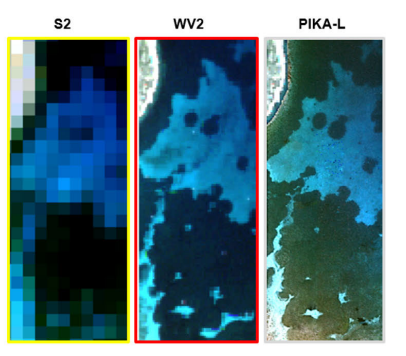The difficulty of climate change for companies in the responsibility of large sports facilities is positioned within a broader framework of advancements. According to Dingle and Stewart (2020), severe weather, rising sea levels, and flooding are among the consequences of global warming that might become intense, ubiquitous, and permanent if emissions of greenhouse gases keep rising at their current rate. However, Campos Rodrigues and colleagues (2018) stress that mountain ecosystems are thought to be more sensitive to climate change, which might have negative consequences such as shorter snowfall seasons. Many studies focus on statistics, but it is also important to consider case studies.
Detailed examples may be the best indication of research progress in an area. Orr and Inoue (2019) promulgated the link between winter sports in the Olympics and the current climate environment. They argue that precipitation was the most iconic weather-related picture of the 2010 Vancouver Olympics. It is a continuation of Inoue’s research that significantly expands our understanding of the relationship between climate and sport. Reduced revenues, destroyed or damaged infrastructure, postponed or canceled competitions, and overall decreased participation in sports are all possible effects of climate change on sports organizations.
Skiing is one of the main winter sports influenced by environmental factors. The sport is primarily an outdoor practice, comparable to tourism, and it depends on a temperate climate that provides suitable climatic conditions, such as temperature changes, precipitation, snow, frost, wetness, or winds, to produce the main sports product and activity (Dingle & Stewart, 2020). An example of this relationship between climate and sport is the dependence of skiing on colder climates.
Ski tourism is considered a billion-dollar industry. Approximately 350 million skiers travel worldwide yearly (Steiger et al., 2019). Steiger et al. advanced their study in 2020 compared to 2019. They established the magnitude of the decrease in overall demand due to weather conditions. If the deterioration is permanent, it will be 64%, and if there are disruptions at the beginning and end of the ski season, it will be 18% (Steiger et al., 2020). The lack of snow cover in ski areas was initially recognized as an impending danger to alpine resorts over 20 years ago (Bausch et al., 2019). Substantial limitations, such as a lack of consideration of susceptibility, tolerance, or methods of adapting sports to global warming, were identified in the studies presented (Dingle & Stewart, 2020). The need for adaptation efforts is now evident as the lack of snow affects the skiing industry.

Research started warming about climate change two decades ago. In 2000, Bodmer and colleagues (2000) emphasized the development of a management information system (MIS), which is built on a GIS-based professional framework that combines data from inventories, data, maps, satellite photos, and aerial photography. The use of UAVs proves to be effective in terms of snow identification in the regions, as can be seen in Figure 2.

The sources that were older than 20 years proved to be accentuating the similar issues of newer sources, which emphasizes the necessity of change. Currently, in a warmer climate, remote sensing technologies are essential for keeping track of the mountainous permafrost (Taylor et al., 2021). The creation of new remote sensing systems with better capabilities and image sensors can help preserve natural resources in natural environments, which can be seen in Figure 1 (Marcello et al., 2020). As an example, Snow Mappy improves user experiences on the slopes for visitors to ski resorts by utilizing potent geospatial technologies (Esri, n.d.). Thus, in terms of climate change, remote sensing systems are crucial for winter sports like skiing. The given sources, as can be seen, play a key role in ski resorts since they bring attention to climate change and its detrimental effects.
References
Bausch, T., Humpe, A., & Gössling, S. (2019). Does climate change influence guest loyalty at alpine winter destinations?Sustainability, 11(15), 1-32. Web.
Bodmer, H. C., Seidel, K., & Aerts, J. (2000). CARTESIAN: Remote sensing based management information system for ski resort planning. In M. F. Buchroithner (Ed.). A Decade of Trans-European Remote Sensing Cooperation (pp.319-325). A.A. Balchema Publishers.
Campos Rodrigues, L., Freire-González, J., González Puig, A., & Puig-Ventosa, I. (2018). Climate change adaptation of Alpine ski tourism in Spain. Climate, 6(2), 1-24. Web.
Dingle, G. W., & Stewart, B. (2020). Playing the climate game: Climate change impacts, resilience, and adaptation in the climate-dependent sports sector. In Creating and managing a sustainable sporting future (pp. 39-59). Routledge.
Esri. (n.d.). Entrepreneur’s dream ski app empowered by GIS and location intelligence. Esri. Web.
Marcello, J., Eugenio, F., Gonzalo-Martin, C., Rodriguez-Esparragon, D., & Marques, F. (2020). Advanced processing of multiplatform remote sensing imagery for the monitoring of coastal and mountain ecosystems. IEEE Access, 9, 6536-6549. Web.
Orr, M., & Inoue, Y. (2019). Sport versus climate: Introducing the climate vulnerability of sports organizations framework. Sport Management Review, 22(4), 452-463. Web.
Steiger, R., Scott, D., Abegg, B., Pons, M., & Aall, C. (2019). A critical review of climate change risk for ski tourism. Current Issues in Tourism, 22(11), 1343-1379. Web.
Steiger, R., Posch, E., Tappeiner, G., & Walde, J. (2020). The impact of climate change on demand of ski tourism-a simulation study based on stated preferences. Ecological Economics, 170, 106589. Web.
Scott, D., Hall, C. M., & Gössling, S. (2019). Global tourism vulnerability to climate change. Annals of Tourism Research, 77, 49-61. Web.
Taylor, L. S., Quincey, D. J., Smith, M. W., Baumhoer, C. A., McMillan, M., & Mansell, D. T. (2021). Remote sensing of the mountain cryosphere: Current capabilities and future opportunities for research. Progress in Physical Geography: Earth and Environment, 45(6), 931-964. Web.